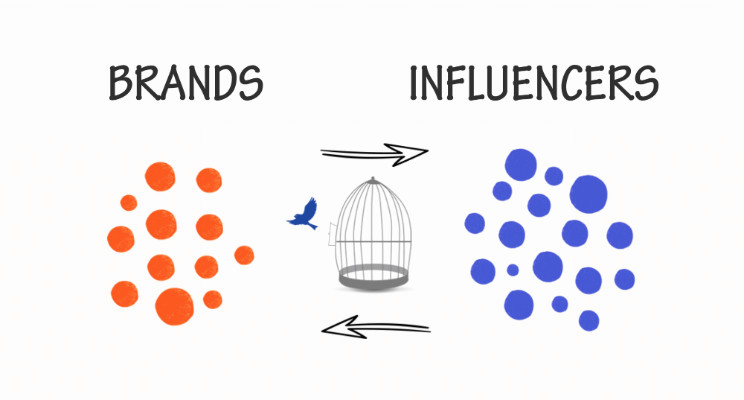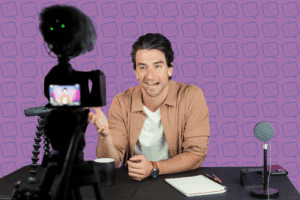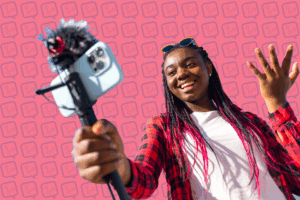Move Over Marketplace – Influencer Marketing Needs a New Model

In today’s technology sector, the marketplace business model garners both interest and attention. The model’s ability to produce massive returns for founders and investors once a specific marketplace reaches critical mass is undeniably sexy. eBay is perhaps the best-known example of this, and Uber is now another. The model has found success in a wide range of industries and verticals, and now it has become the dominant model for the influencer marketing space.
In this article, I offer insight as to why the marketplace model took hold in the influencer space, and then explore its implications as it relates to both businesses and content creators. I then discuss early, grassroots trends surfacing on both the influencer and business side of the transaction that transcends the limitations of the marketplace and opens doors to a more fruitful form of collaboration.
Table of Contents
- The Birth of the Influencer Marketplace
- Implications of the Marketplace Model
- Transcending the Marketplace
The Birth of the Influencer Marketplace
Marketplaces hold an important place in mankind’s history. Their genesis can be traced back to ancient times as locations where society would come together to buy and sell goods and services.
An influencer marketplace is very similar to this, but rather than a physical location, the marketplace is an online, digital platform where businesses and social influencers can log in and engage with each other for commercial transactions like sponsorships and promotions.
When examining why the marketplace model has taken hold of influencer marketing, the model’s attractive ability to scale and drive revenue for founders and investors is absolutely one reason, but the media theorist Marshall McLuhan provides an alternative lens. In his concept of “the rear-view mirror,” outlined in his book Understanding Media, McLuhan argues:
“When faced with a totally new situation, we tend always to attach ourselves to the objects, to the flavor of the most recent past. We look at the present through a rear-view mirror. We march backwards into the future.”
These are powerful words, and they make a lot of sense. When a new concept like influencer marketing comes along, it’s much easier for founders to default to existing business models rather than pioneer new ones. We’ve all heard new founders using analogies to describe their product or service – “We’re Uber for doggy day care,” or “the Kayak for bus travel.” In other words, one way to innovate is to apply similar models to newer markets, and oftentimes it makes sense to do so, but sometimes it doesn’t.
The concept of the rear-view mirror doesn’t only apply to the very first entrants in a new market, but it’s also evident in the wave of copycats that follow in a successful innovator’s path. It’s easier to copy something that “works” than figure out something new, and this is why we’re seeing new marketplaces and talent networks spring up regularly, with a growing focus on niche influencers (and in turn, niche audiences).
Implications of the Marketplace Model
While in some ways influencer marketing is new, it has been around in the advertorial format and “word of mouth” marketing for a very long time.
However, from a cultural perspective, the concept of influencer marketing has found new life. We’re living in an unprecedented age of integrated communication, but also in an unprecedented age of creation.
In this new age of creation, individuals (with access to the internet and computers) are able to earn livings by focusing on their passion. They can create videos, produce music, host their podcasts, and design/print/sell their own 3d products. In turn, individuals are now able to skip the traditional route to economic stability, getting a j-o-b, and follow their heart.
Creators can now follow passion, and when a creator’s passion comes through in their media content, the content has an enhanced ability to persuade its audience. This cultural shift has been happening slowly for decades – and we’ve seen it with older media like writing, radio, music. But in a way similar to the concept of Moore’s Law, this is now happening at an increased pace.
With this cultural shift in creation, we need to ask ourselves, as business-owners, as content creators, and as consumers, is the marketplace model best suited for the nuances and peculiarities of the influencer marketing industry?
The marketplace model makes sense when products are clearly defined. It makes sense when ervices can be easily packaged. As Glenn Laumeister argues, marketplaces flourish when friction is completely removed from the buying and selling processes:
The secret sauce is not the technology, although that plays an important supporting role. It is the single-minded obsessive focus on solving one big universal problem for the buyers, and removing that friction that existed in transacting offline. When the solution is understood, built and solved at scale, this “secret sauce” enables marketplaces to grow exponentially.
Once the friction of buying and selling is removed, the marketplace can begin to scale. Yet, in influencer marketing, it’s inherently difficult to remove this friction. The “product” is difficult to define and contain. Content marketers want explicit pieces of content that they can own, whereas other advertisers might want distribution on influencer-owned channels, and affiliate marketers might want clicks, downloads or purchases and content quality takes the back seat. And in the creator’s (and perhaps the savviest marketer’s) mind, the product may actually be looked at as passion, rather than a material deliverable.
In turn, one has to wonder if the peculiarities of influencer marketing will prohibit a single influencer marketplace from reaching the critical mass necessary to scale. If they cannot, marketplaces will remain largely what they are today: services-based marketing agencies operating under a technological cover.
Transcending the Marketplace Model
A simple metaphor for discussing what I currently see happening in the influencer space is the following proverb:
“give a man a fish and you feed him for a day; teach a man to fish and you feed him for a lifetime.”
Rather than someone else, a third party, catching your fish and preparing it for you, you’ll learn how to go out and find the kind of fish you want for yourself.
Applying this metaphor to the marketplace model of buyers and sellers, the relationship between business and influencer begins to look more like partnership guided by the pursuit of mutual gain. Businesses and content creators are now going outside of their comfort zones and learning how to fish for themselves.
This concept is also similar to the concept of “the alliance” that is forming between employers and their employees that Reid Hoffman, Ben Casnocha, and Chris Yeh outlined in their latest book. Neither party “owns” the other, and it’s important to recognize why both sides are coming together to team up in the first place. Both sides are on a mutually beneficial journey and they’re partnering to achieve their own version of success.
Brands and businesses must build these relationships themselves because authentic relationships are at the core of what makes influencer marketing successful. When the influencers and brands are both motivated by the same values, the ultimate product, or resulting content, takes a more explicit strength. If the motivation is purely monetary, the promotion may not be genuine, which may be more obvious to the audience.
More and more businesses and creators are waking up to this reality and acquiring the tools and knowledge to operate as entrepreneurs and build relationships directly with businesses and brands.
For instance, Matt Wentworth of the band Our Last Night, one of the biggest YouTube music sensations with 855,000+ subscribers, thinks content creation today is more entrepreneurial than ever before. And it’s not just in music – it’s in video and it’s in business.
“We’re an entrepreneurial band. For us, it makes more sense to do business development ourselves, on our own terms. Ultimately, we’ve been able to make a lot more money on our own, and our sponsors have been more successful engaging with our audience.”
While the band initially used an influencer marketplace to identify sponsorship opportunities, they’ve realized the benefit of going out on their own to close business deals. Trevor Wentworth, the band’s singer, now does this full time for the YouTube channel, the band’s Instagram account, as well as his own personal Instagram account.
This phenomenon is not exclusive to creators and influencers – brands are coming forward and doing this as well. EA Sports is well-known in the gaming community (and marketing community) for recruiting their own influencers for their own internal Ronku program.
At InfluenceLogic, we power influencer programs similar to Ronku for enterprise customers, and smaller companies can use our software to power their own programs.
Despite mainstream appeal, influencer marketing is still in its infancy. New technology companies and new creators are appearing on the radar each and every day, and bigger players in the media landscape are starting to acquire newer companies – and marketplaces – that are showing early traction.
As the industry matures, and as more content creators enter the space and begin to monetize the work they love to do, it will be in their benefit to own relationships with advertisers and collaborate with them directly. Like most endeavors, be it creative or business, I firmly believe those who control their own destiny are the most likely to flourish.
What do you think? Will a single marketplace rule them all? Will agents own relations with niche influencer categories? Or will the landscape open up and the middlemen disappear?






